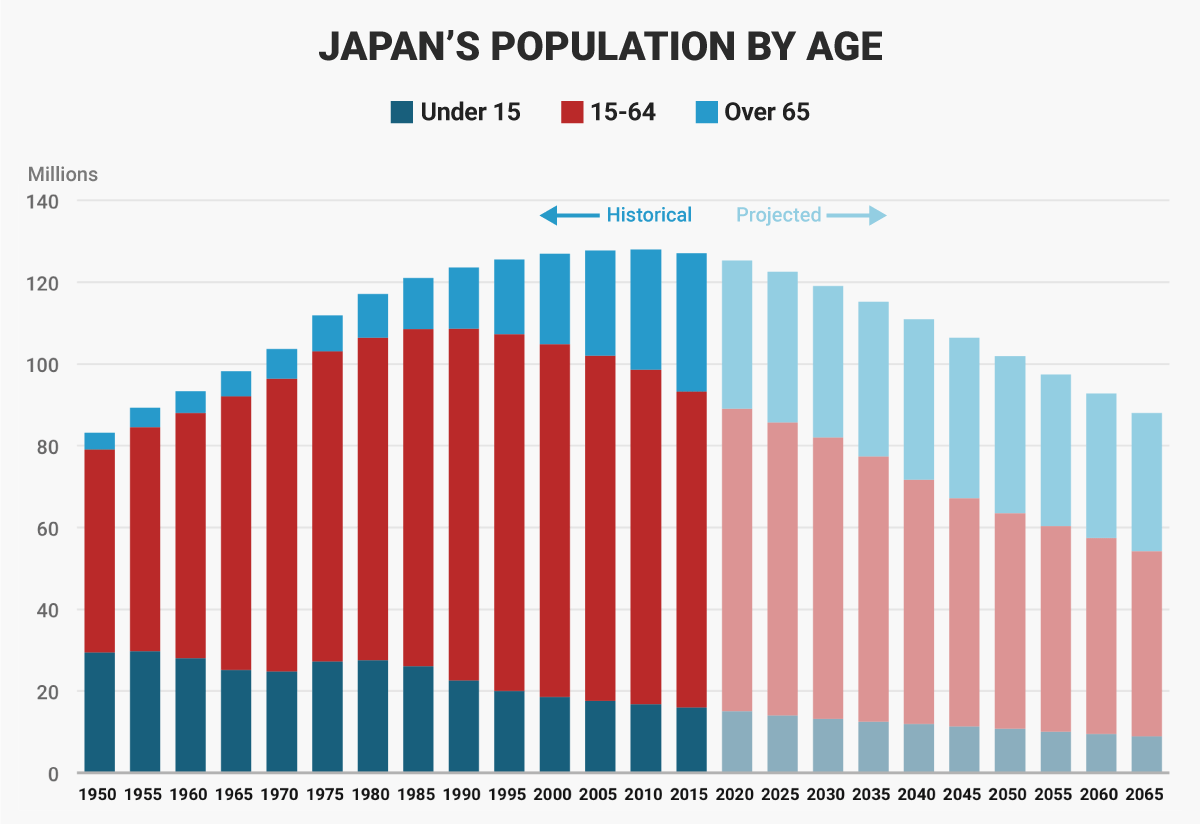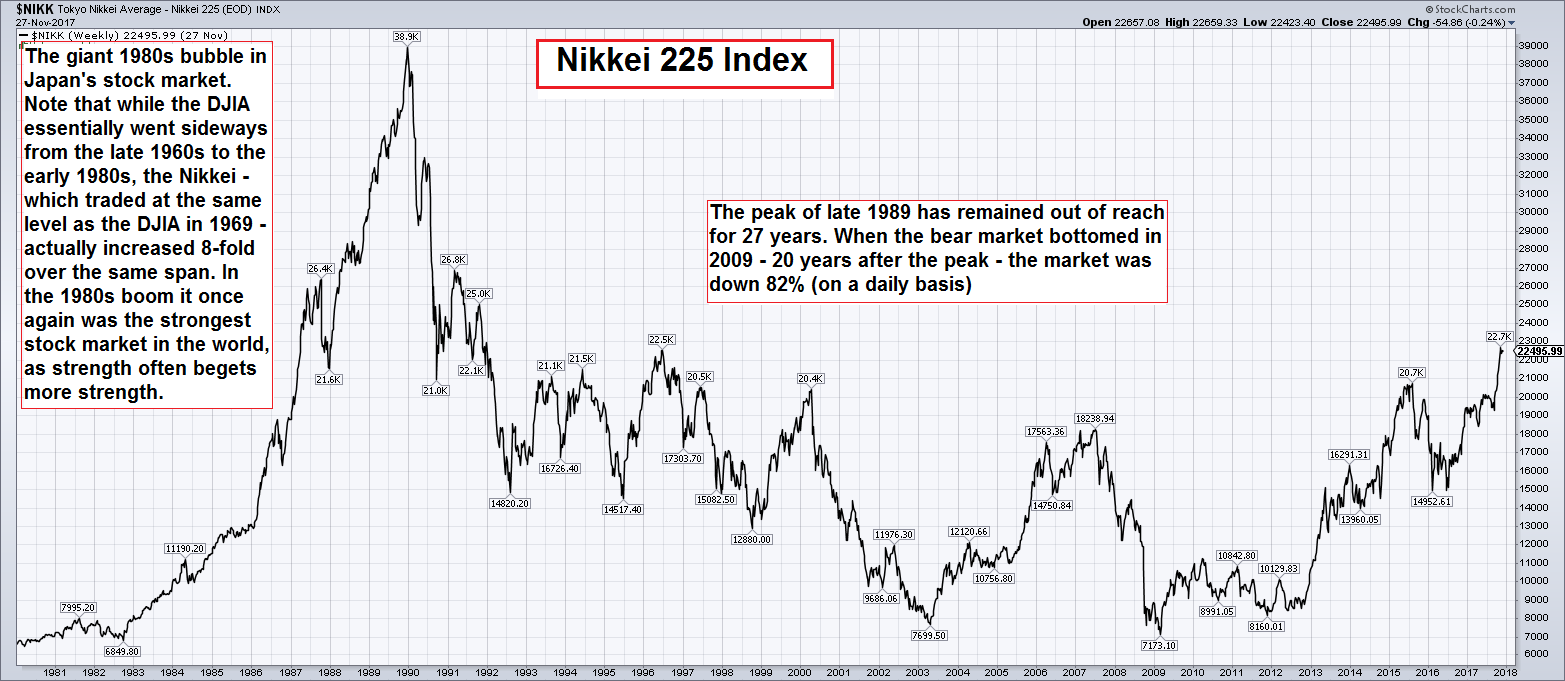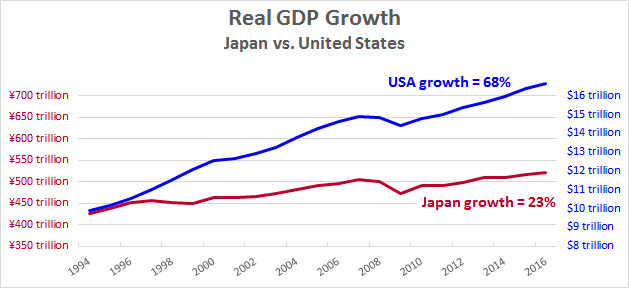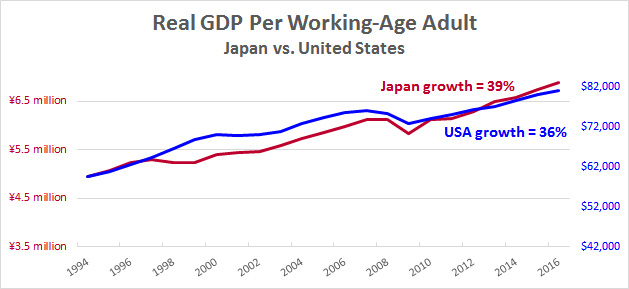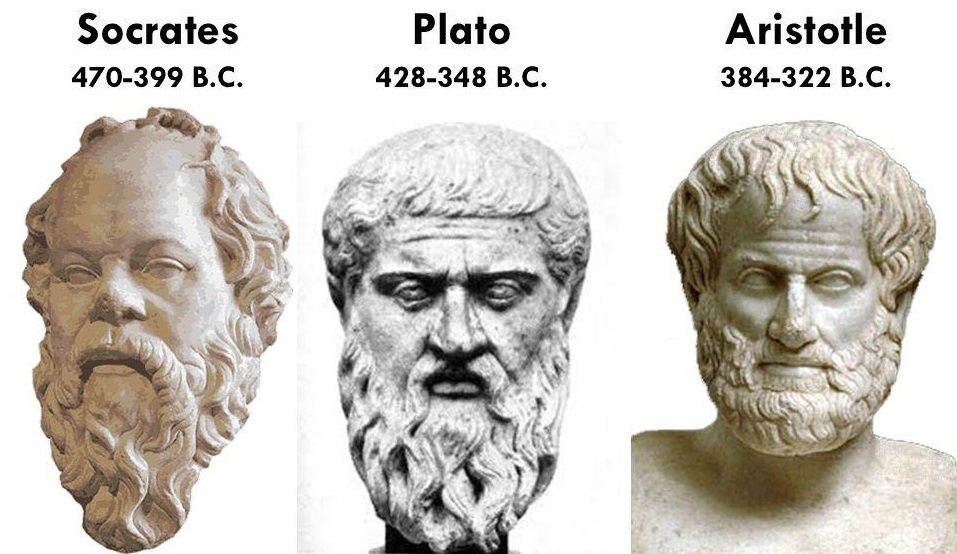Known for Being TerribleFor the past few decades, Japan has been known for its stagnant economy, falling stock market, and most importantly its terrible demographics. |
Japan's Population by age, 1950 - 2065Most people consider a declining population to be a bad thing due to the implications for assorted state-run pay-as-you-go Ponzi schemes, primarily those related to retirement. It is hard to be sympathetic, since it would have been possible to do something completely different from the outset. Even with respect to existing schemes, we don’t recall that anyone forced politicians to direct funds designated for funding social security claims to alternative uses at the time when these schemes still enjoyed a surfeit of revenues. Of course one has to be sympathetic to the future victims – those who paid in during their working lives and will end up getting stiffed. However, this is a problem that could be easily resolved by simply winding up the State in orderly insolvency proceedings prior to abolishing it. Most nation states have large amounts of assets at their disposal (e.g., they are often the by far largest land owners in the territories they control), which should suffice to cover the claims of creditors and to pay out the NPV of accumulated pension claims in lump sums. There is one way in which a declining population still has to be regarded as a drawback though. The market will so to speak have to function with fewer network nodes as the population shrinks. There will inevitably be a concomitant decline in distributed knowledge. Thus fewer ideas will occur to people and will be pursued; markets will become less efficient, the division of labor in the broadest sense will suffer a setback. Consider in this context that the market is the opposite of central economic planning in every way – the larger the network of people included in it, the better it will work for everyone. |
| For almost three decades, Japan’s GDP growth has mostly been less than 2%, has been negative for several of these years, and has often hovered close to zero. The net result is that its GDP is almost at the same level as 25 years ago. |
Japan Gross Domestic Product(see more posts on Japan Gross Domestic Product, ) |
| The stock market index (Nikkei 225), which at the last trading day of 1989 stood at 38,960, is around 40 percent lower today, despite the fact that 27 years have passed. Malinvestments in infrastructure and cross-holdings of shares among companies and the resulting crony capitalism are getting a lot of the blame for draining away Japan’s competitiveness. Confucian culture is blamed for a lack of creativity and an environment in which wrongs done by senior officials go unchallenged.
But the real problem of Japan is supposed to be its demographic meltdown. The population is falling and the proportion of old people is growing. The median age is 46.9 years and increasing, and the elderly dependency ratio is 42.7%. By 2050, Japan’s population is expected to fall to 109 million people from the current 127 million, while the dependency ratio will continue to increase. |
Nikkei 225 Index, 1981 - 2018 |
Unwilling to Procreate?Major media publish regular reports about the Japanese refusing to have sex, and the large number of people in their forties who are still virgins. The “vagaries” of Japanese sexual life amuse outsiders. Manga (comics) and anime (animation) cater to fantasy by creating virtual worlds. People play pachinko (an arcade game like pinball, also used for gambling) for 18 hours a day. Girls in cute uniforms entice customers into maid-cafes, or perhaps to date joshi kosei (high school) girls. You can pay money to lie on a bed with a girl who does no more than hold your hand. There are even vending machines that dispense used panties. |
|
| The unemployment rate is a mere 3%, and during my recent visit to Japan most companies told me how extremely difficult it has become for them to find recruits. Japan refuses to admit refugees or migrants, which in today’s world is seen as extremely close-minded, perhaps even bigoted. |
Akihabara in Tokyo, a place for “school-girl activities”. The video is a brief excerpt from a documentary on Japan’s bizarre obsession with “cutesy culture”. |
Two Contradictory ImagesAll of the above is presented in an unfavorable light in the international media. International organizations beg Japan to listen to tear-jerk stories about Syria and Libya and to show compassion by admitting refugees. The Japanese are constantly reminded that if they want their old and infirm people to be looked after, they must allow immigration. While 21% of the population of Canada and 26% of Australia’s population consists of first-generation immigrants, Japan is still 98.5% ethnically Japanese. The two largest ethnic minorities — Korean and Chinese — make up less than 1%. Japan simply does not want outsiders. When I was doing my MBA in the early 1990s, people looked up to Japan. In retrospect we can see that the country’s economic growth and stock index were peaking. Opinion pieces on the outrageous prices of real estate were common. At one point, the assessed value of the grounds of Tokyo’s Imperial Palace was higher than that of the entire state of California. In my MBA classes we heard lectures on kaizen and other Japanese practices, terms that hardly find mention in the media these days. We were constantly reminded of how well the Japanese work in groups, and how this should be implemented in the West. So which image is true? The romanticized portrayal of the 1990s, when Japan was seen as the solution to the world’s problems, or today’s dismal caricature, in which Japan is part laughingstock and part rapidly declining society headed toward self-destruction? In both cases, in my view, the world has looked for mere rationalizations, rather than trying to dissect the underlying issues. I am a huge fan of Japan. In Japan I see the future of humanity. Perhaps Korea and China should be included in that vision of the future. The South Koreans and Chinese — who might superficially dislike Japan — have eagerly copied Japanese ways. Japanese products are sold in abundance in East and Southeast Asia. All the way to Malaysia and Singapore, people look to Japan as a model and now increasingly to South Korea as well, which copied its economic miracle from Japan. Blaming the Japanese for not being innovative is a distortion of reality. An American geologist with whom I recently spent a couple of days in Japan called the young Japanese “young Einsteins,” while showing me an innovative product that a large Japanese company has developed. From factory floors to homes, robots have made huge inroads into the Japanese society. They may mitigate or even nullify the risk that the country could experience a shortage of workers. |
Real Gross Domestic Product Growth, 1994 - 2017(see more posts on Japan Gross Domestic Product, U.S. Gross Domestic Product, ) |
| Real GDP growth in the US and Japan. This chart actually does not give you the real picture – the next chart does.
Real GDP per working-age adult is a better reflection of underlying Japanese competitiveness. Japan is comparable to the US despite the fact that Japan is not “benefiting” from a massive influx of cheap migrants and the brain-drain suffered by other countries.
|
Real Gross Domestic Product per Working Age Adult, 1994 - 2017(see more posts on Japan Gross Domestic Product, U.S. Gross Domestic Product, ) |
Japanese ExcellenceJapan has produced a mind-boggling array of international brands: Toyota, Sony, Citizen, Canon, Hitachi, Komatsu, Nikon, Panasonic, Toshiba, Honda, Seiko… the quality, perfection, passion, devotion, and mindfulness that these brands embody are hard to beat. And it’s not just the brands. Quality, cleanliness, and attention to detail is in evidence everywhere in Japan. Only a very few countries in Europe exhibit similar levels of devotion to excellence. Politeness is one of the major pillars of any civilization. It shows respect for other individuals, and it reflects how people live, work, and engage with others. And Japan is among the most polite societies in the world. There are seven possible conjugations for most verbs, depending on how polite the speaker wants to be. I have traveled a lot on Japanese trains, and not once did the person sitting in front of me fail to ask my permission before reclining his seat – despite the ample leg space provided on these trains. When people arrive at their destinations, they always set their seats straight and place magazines back the way they found them when they arrived. |
Japanese trains: There simply isn’t anything comparable elsewhere in the world. But that holds true for many things one finds in Japan |
| I cannot remember when my train was ever late, even by a minute. In Japan, South Korea, Taiwan, Singapore, Hong Kong, and increasingly in China, even in crowded subways, people mostly do not use the seats at the entrance of the compartments, so that they are always available for pregnant women and the elderly.
The seats remain empty because travelers don’t want to embarrass any pregnant women or old people who may arrive later by vacating the seat in their presence. No one talks on his phone or plays music using a speakerphone. Mostly people don’t even talk. They are at peace even on the subways, their ears not violated by the noise of others. I try my best to be polite, but the Japanese beat me every single time. One must try to understand the mind and heart that they are put into their work, and how they respect their clients. By presenting this model, Japan provides any society that is prepared to learn it with a free opportunity to adopt its civilizing culture. Japan was almost completely destroyed in World War II, and rose from the ashes through sheer willpower. I love the heartfelt honesty, respect, and integrity of this country. A few months after the Tsunami of 2011, I visited the area around the town of Sendai, which had been devastated. There had been no rioting or robbery – zero. People did not beg for help from the government; within months they had fixed up the place themselves. Piles and piles of crushed cars stood in neat heaps. The ruins where houses once stood had been cleaned up. Roads had been reconstructed so that a new city could grow up around them. Only someone without a heart would have failed to be moved by seeing what this group of proud people was able to achieve. Hiroshima after the nuclear attack at the end of WW2. Japan faced utter devastation at the end of WW2. Civilians suffered hugely through no fault of their own. But ask a Japanese citizen of today if he feels impaired or hurt by these events. He won’t even understand your question. Proud people move on and do not blame the past for their present sufferings.
Throughout the world, numerous groups complain about the historical injustices that “they” (actually their ancestors) faced. In 1945, Japan stood extremely humiliated and virtually destroyed, the only country in history to be attacked with a nuclear device. But ask the Japanese about their suffering in those days, and you will very likely get a blank stare. Proud people do not blame their past for their present. |
|
A Counterfactual NarrativeJapan is still 98.5% Japanese. Is that inward-looking and racist? Maybe that is the wrong question. Multi-ethnic societies have worked virtually nowhere in the world. People who arrived in Europe as long as 1,400 years ago, such as the Romani gypsies, are still a separate community today. As a group, they are not only not assimilated; they have not integrated with mainstream ways of life. People tend to become ghettoized along racial, religious, or linguistic lines. That has been the historical experience in North America, Europe, and other parts of the world. Japan has avoided all of the associated social problems — including crime and terrorism — that afflict the developed world today. Street crime is virtually unknown in Japan. No one locks his bicycle and people often leave their belongings — including purses — unattended. Late at night, young women can walk the streets alone without fear of being accosted, even in areas controlled by the Yakuza (Japanese mafia). Six-year-old kids can be seen crossing the road all alone. The Japanese bureaucracy is believed to be slow and an impediment to innovation. It is hard to measure how much more bureaucratic Japan is compared to other developed nations, but on the Economist’s crony-capitalism index Japan — again quite contrary to popular beliefs — is ranked better than the US and the UK. |
Crony Capitalism Index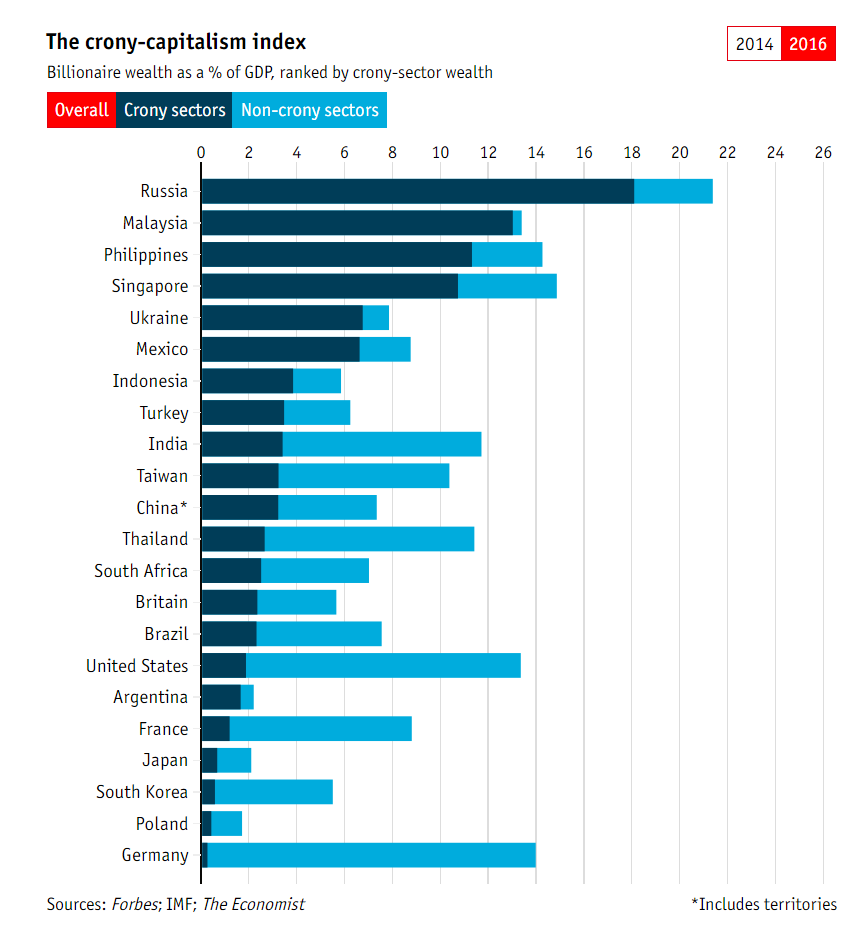 Only three major countries are considered to be even less beset by cronyism than Japan. - Click to enlarge Note that that is based on the very specific definition used by the Economist, which has designated certain industrial sectors as particularly prone to rent-seeking – which seems a sensible way of looking at it, but the problem is that with today’s Leviathan State it is hard to tell what should be excluded. Moreover, the large size of the commodities sector in some countries that are well-endowed with natural resources will tend to skew their place on the index (while Japan benefits a little from having a relatively small commodities-producing sector). |
Is it at all possible that a counter-factual narrative was constructed by the leftist social justice warriors who control the media, to pressure Japan into doing the bidding of pro-multicultural, pro-diversity international organizations?
An outsider does react with shock to some of the images of anime and manga, and the idea of buying used schoolgirls’ panties in vending machines. But the reality is that sexual perversion is not unique to Japan. In the West the law is so strict that a lot of perversion remains hidden.
But one does get a glimpse of what so many Western men are looking for when they go to Thailand and surrounding countries, or to Latin America. What I find impressive is that what Japan does is right in your face — Japan is like the Amsterdam of Asia.
42 percent percent of men and 44.2% of women between the age of 18 and 34 are said to be virgins in Japan, a statistic one often reads in the international media. But this statistic pools together a broad band of ages. There is nothing unusual — or even wrong — about 18-year-olds being virgins.
Another often quoted figure is that one out of four Japanese over the age of 30 years is still a virgin. This is wrong, for the data applies only to unmarried people, yet the word “unmarried” is often left out. Eighty-six percent of men and 89% of women eventually marry. So the correct estimate of virgin Japanese over the age of 30 years is less than 4%, far fewer than the media would have you believe.
Are single mothers and promiscuity really the metric of a better society? Western media seem to suggest this is so. There is indeed a correlation between being conscientious and shyness in sexual matters. Only 2% of Japanese children are born out of wedlock, compared with 40% in the UK and the US. This is to be celebrated, not ridiculed.
There is really not much about Japan’s demographics that is abnormal. The country’s native birth rate compares well with that of other wealthy economies. There is indeed a problem in that the Japanese live longer, surviving into their unproductive years farther than people elsewhere — hence the high and growing dependency ratio. This is a problem, but it is a problem of success, not of failure.
An Accomplishment to be Celebrated
I cannot but wonder if Japan is demonized for refusing to promote immigration or promiscuity. In my view it is perhaps the best large country in the developed world — for exactly the reasons it is, ironically, demonized for.
My Japanese friends tell me about the inhibitions that kids develop under a very strict social structure, but for me as an outsider — a gaijin, literally “not one of us” — it is hard to understand Japan’s social dynamics completely. Japan indeed has its problems, but they are far outweighed by the good things the place has to offer. It is one of humanity’s finest accomplishments, which should be celebrated not just by the Japanese, but by everyone.
Full story here Are you the author? Previous post See more for Next postTags: Chart Update,Japan Gross Domestic Product,newslettersent,On Economy,On Politics,U.S. Gross Domestic Product










